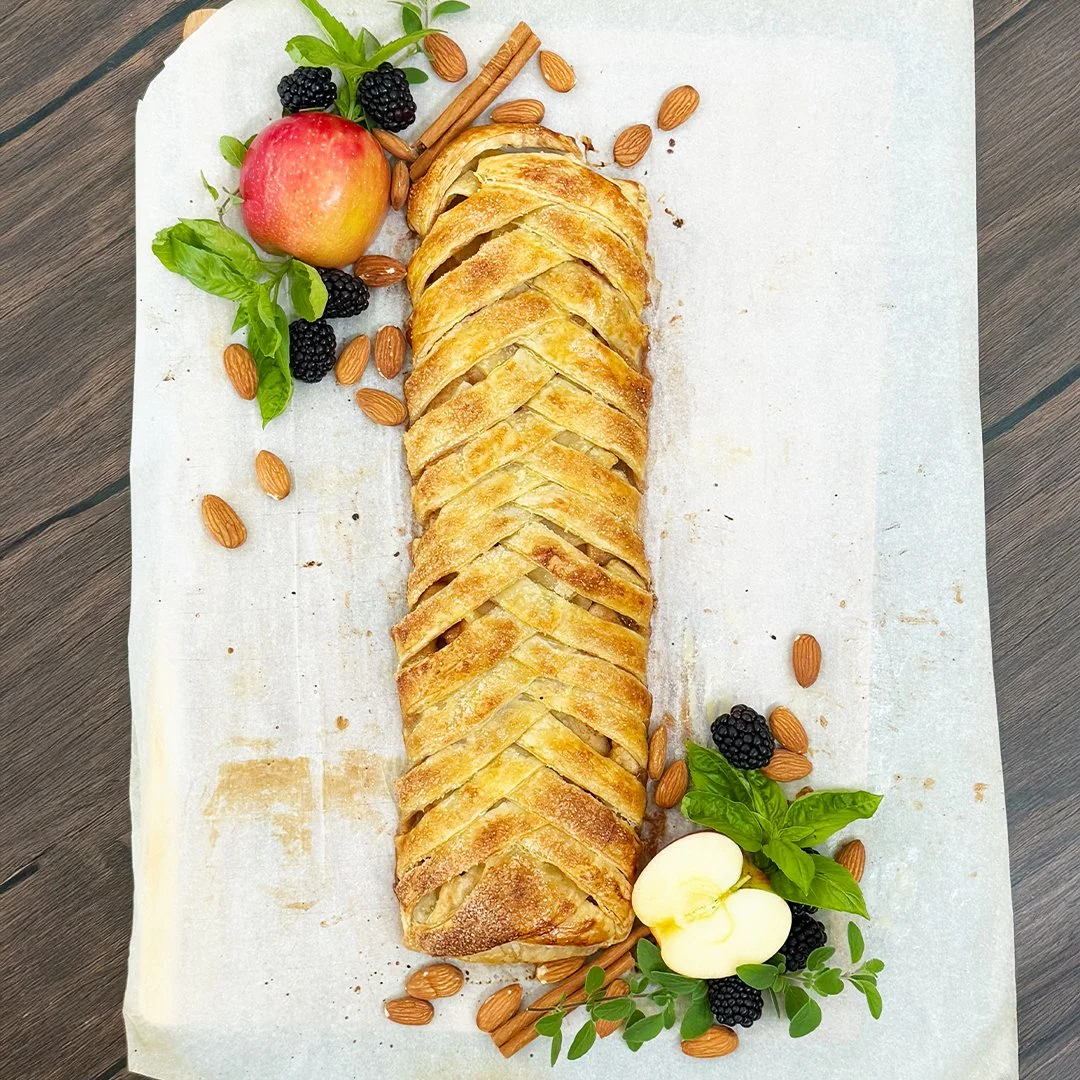German Apple Strudel







Did you know that apple strudel roots in the Ottoman Empire's baklava, which introduced the concept of layered pastry to Europe in the 16th century? Over time, European bakers adapted the technique, creating the delicate, layered strudel dough.
Apfelstrudel (apple strudel) specifically originated in the Habsburg Empire in present day Austria and became popular across German-speaking regions. The first documentation of the recipe dates back to 1696, in the Vienna City Library. The recipe generally consists of apples, raisin, sugar and flaky pastry.
In the 18th and 19th centuries, many German and Austrian immigrants brought their culinary traditions, including apple strudel, to America. These immigrants settled in areas like the Midwest and Texas, where their recipes were adapted and passed down through the generations. My paternal grandmother was a descendant of those German immigrants in the Midwest, and strudel has always been a cherished part of my Schmidt family’s heritage.
My husband and I especially enjoy making this dish during the winter months, when its warm spices are so comforting. I prefer this pastry to a pumpkin-spice latte any day of the week. If you’re short on time and can’t make the strudel dough from scratch, you can substitute puff pastry instead. Pre-made sheets are usually available in the freezer section of most grocery stores. This is an American modification. If you want to make a more traditional or americanized version of an apple strudel, here are some basic differences:
Traditional, German:
Pastry: Homemade, strudel pastry dough (rolled into 2x4-ft rectangle)
Inside: Add 1/2 cup of raisins & 1/2 cup chopped walnuts to apple mixture; coat mixture with cinnamon and place on bed of toasted bread crumbs
Style: Rolled into burrito, tucking edges under as you go for a seamless look
Topping: Use either large-grain sugar before baking, or powdered sugar after baking
Americanized:
Pastry: Pre-made, frozen puff-pastry dough (rolled into 16x8-in rectangle)
Inside: Omit raisins/walnut, add 1/2 tsp of nutmeg when incorporating cinnamon to apples
Style: Braided with ventilation incorporated
Topping: Add vanilla frosting glaze and almond slices once pastry cooled
(See WW2 Coffee Cake Recipe for a quick, frosting glaze recipe.)
However you prefer your apple strudel, this dish is sure to impress guests at holiday gatherings or special occasions.
Baking Tip: Let your apple filling cool down before assembling. It’s easier to assemble and style the pastry.
Ingredients:
1 sheet pre-made puff pastry
3-4 medium, granny smith apples
7g (1 tbsp) cinnamon
113g (8 tbsp) unsalted butter
24g (3 tbsp) flour
59ml (1/4 cup) water
200g (1 cup) granulated, white sugar
1 egg yolk + 1/4 tsp water, for egg wash
12g (3 tsp) granulated, white sugar, for topping
Directions:
Thaw pre-made puff pastry on countertop for 20-40 minutes, or overnight in the fridge.
Melt butter in a pan over medium heat. Whisk in flour, water, and sugar, cooking until smooth, about 3 minutes. Remove from heat and set aside.
Peel, core, and thinly slice 3-4 medium apples. Place in a large bowl, sprinkle with cinnamon, and pour the sauce over. Stir with large spoon to coat evenly.
Sprinkle flour on a parchment-lined work surface. Roll the puff pastry into a 16x8-inch rectangle. Using a knife, cut 8-12, two-inch strips along each long side of the rectangle.
Place the coated apple mixture down the center of the puff pastry. Fold the strips over the filling, alternating to create a braided enclosure.
Combine egg yolk and water with fork. Lightly brush the top of the braided pastry. Sprinkle with 3 tsp of granulated sugar and transfer to baking sheet lined with parchment paper.
Bake at 400°F/200°C for 25-30 minutes until golden. Let cool on wire rack and enjoy!
“German food in America is more than a meal; it’s a celebration of heritage, community, and the flavors that bring people together.”
